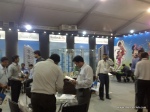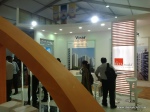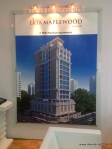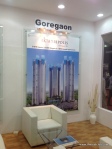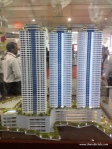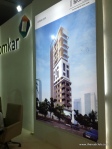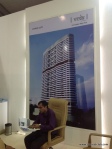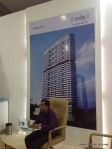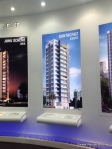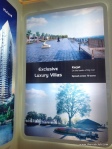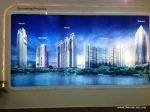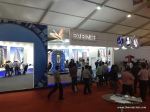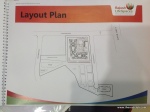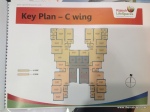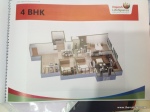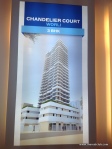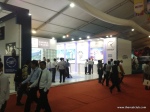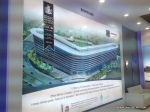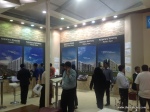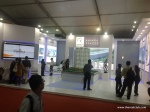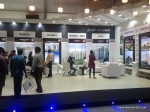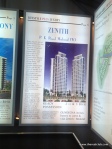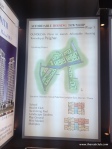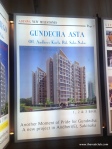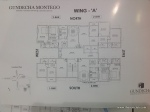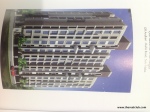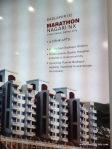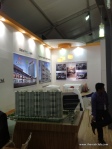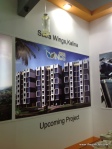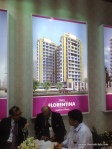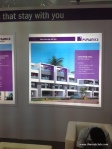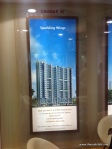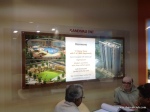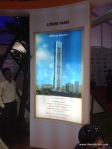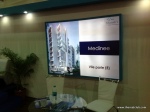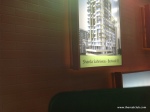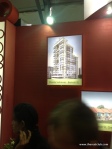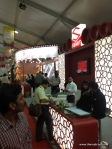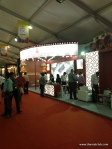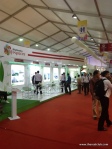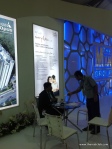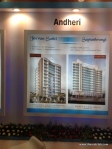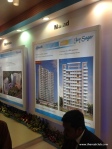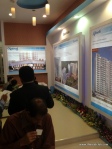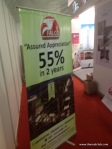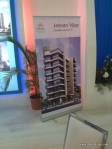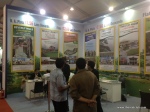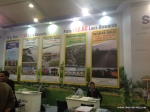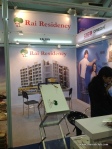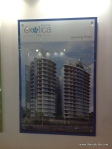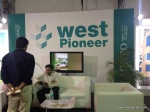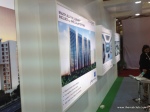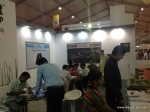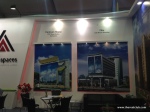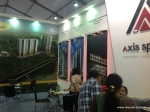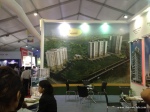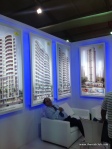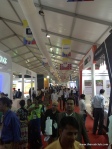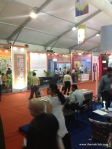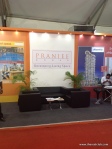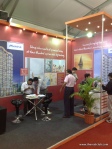Tag Archives: Flat Owners
Builder recalculates VAT, halves flat owners’ liability
A Belapur housing society recently scored a major victory over the value-added tax (VAT) issue. Following Lakhani’s Suncoast Cooperative Housing Society members’ refusal to pay 5% of the agreement value as VAT, Lakhani Builders reworked the VAT calculation. As a result, the amount sought from flat owners got reduced by almost a half.
A member whose VAT liability was initially pegged at Rs 8.6 lakh has now been asked to pay a much reduced Rs 4.8 lakh. Another had to pay only Rs 1.4 lakh against Rs 2.5 lakh sought from him earlier.
In September, the society had written to the builder asking for a detailed breakup of the VAT amount and how it was arrived at; there are multiple options under the Maharashtra Value Added Tax (MVAT) Act for calculating the VAT amount.
“We are happy that the builder took note of the customers’ sentiments and offered a compromise formula. We believe this was possible as all the flat buyers supported each other. We hope other builders and housing societies follow suit,’’ said a resident
.
Vijay Lakhani, chairman of Lakhani Builders Pvt Ltd, confirmed the VAT calculations were revised and the new amount sought has almost halved.
“The amount was high as there was no clarity for long on how it was to be computed. It was only after discussions that we found ways within the same rules to pass the benefit to our buyers and reduce it,’’ said Lakhani.
A leading developer at Borivli, too, has reduced the VAT amount sought from 3% of the agreement value to 1.65%.
Another housing society at Kharghar took a cue from the Suncoast experience and asked their developer to not encash the bank guarantees till they give the flat owners a detailed breakup of the 5% VAT amount.
The developer had relented and promised to give the VAT amount breakup by October 15.
Help at hand for property buyers M ore than 300 flat buyers have registered themselves at a website www.flatvat.com set up by Sharad Patel, a flat buyer himself and founder-partner of chartered accountants ASJ and Company. The site promises to assist people in tackling issues related to VAT. “Property buyers in Maharashtra are confused and do not know where to get help,’’ the website states. TNN
Carpet and Built Up Area Saga – The old Story Continues….
Big names ignore code of conduct at MCHI- CREDAI property exhibition, quote rates on basis of super built- up area
VARUN SINGH varun. singh@ mid- day. com OF the 120 builders showcasing their properties at the MCHI- CREDAI exhibition yesterday, not more than a dozen were selling flats on the basis of carpet area. According to MCHI’s own code of conduct, a builder should disclose the carpet area to the flat buyer.
Instead, an overwhelming majority of builders at the exhibition organised at the Bandra Kurla Complex by MCHI- CREDAI — a representative body of real estate developers — were selling on the basis of “ saleable” area, which includes built- up and super built- up area.
Builders like the Ajmera Group, Hiranandani, Lodha and many other reputable players in the real estate industry were found sticking to saleable.
The chairperson of the Exhibition Committee of MCHICREDAI is Bandish Ajmera. His uncle, Rajni Ajmera, has been the president of MCHI. Niranjan Hiranandani, too, has held the post of president of MCHI in the past.
Representatives at the stalls, when asked whether they were selling on saleable or carpet basis, were prompt to reply: “ Saleable.” One even said, “… Else, how will a builder make profit.” In the sea of saleable, there were a few swimming against the tide. One of them was the president of MCHI, Paras Gundecha, who was selling his flats on the basis of carpet area.
Like him, Rustomjee also talked carpet while quoting its prices.
In September 2011, MCHI had come out with code of conduct, which specified that a builder had to clearly state the carpet area to the purchaser (‘ Now Code of Conduct to Govern Builders’, MiD DAY, September 16, 2011).
The exhibition, where a written sign loudly proclaimed ‘ MCHI hai toh bharosa hai’, saw most builders not following the code and selling flats on the basis of saleable area only.
On the question of why the code was not being followed, builders said the carpet area concept would take some time to settle in as a trend.
“ On the positive side, there are builders who are talking about carpet area at the exhibition,” Bandish Ajmera said. “ It will take some time; already within a few months builders have started talking to customers using carpet area rates. I am sure in the coming days all builders will disclose to customers the carpet area. Whenever a buyer asks for the carpet area, we do tell him the same.” Ajmera said as the paperwork always involved carpet area, the customer was not kept in the dark about it.
“ At the end of the deal, every flat is registered on the carpet area, the stamp duty and registration fees are paid on the carpet area, and thus the homebuyer automatically becomes aware of the carpet area,” he said. Niranjan Hiranandani of the Hiranandani Group said: “ All our deals on paper are only on carpet, however it’s the customers who want to know the saleable area along with carpet, and hence we tell them both.” S Karthik of Lodha claimed that none of his projects were sold on saleable, but when informed about what was happening at the exhibition stall, he said: “ I will have to check on this.” Another builder, who spoke on the condition of anonymity, said: “ It’s the customers who want to know the super built- up rate, so we tell them the saleable area. Anyway, there’s not much difference between the saleable and carpet area prices. The builder divides the total sale amount with the carpet area when he sells on carpet area basis and with saleable when he sells on super built- up. For example, if a builder is selling an apartment of 500 sq ft carpet at the rate of Rs 1 crore, the rate would be Rs 20,000 per sq ft.
If he sells the same on saleable basis, the area would go up to 800 sq ft and the rate would come down to Rs 12,500 per sq ft.”
Disappointed visitors
Prospective homebuyers at the exhibition complained that most builders showed them flats that they were selling only on saleable area basis.
R G Gulati, who came looking for an affordable home, said: “ Every time I come, the flat prices are high. This time, every builder showed us flats only on saleable. Why would a builder sell to us a flat on carpet area when he’s selling everyone on saleable? Why would he make arrangements for me alone?” Another home- seeker, who did not wish to be named, said: “ We know the final price won’t differ irrespective of whether the builder sells the flat on carpet or saleable area basis. But when the builder discloses the carpet rate, we at least know at what rate we are getting the home and how much area we will get to use.”
MINISTER SPEAKS
Minister of State for Housing Sachin Ahir said: “ It’s high time that the BMC and the revenue department start the process that we have asked them to. We are trying to ensure that the BMC passed building plans only on carpet area, and the stamp duty department should register flats only when it sees the passed carpet area plan.
The customer also should now ask the builder for sale only on the basis of carpet area.”
Govt may consider easing VAT norms
TAXING TIMES
Govt may consider easing VAT norms
Fin Minister Hints At Relaxation For Smaller Flats
Mumbai: The state cabinet on Wednesday discussed the possibility of providing relief in collecting value-added tax (VAT) from builders for underconstruction flats sold between 2006 and 2010. A demand was raised in the state cabinet to apply the post-April 2010 composition scheme of levying 1% of the agreement value to buildings constructed between 2006 and 2010 instead of 5% of the works contract value being currently sought.
Builders and flat buyers at loggerheads over VAT levy
Builders and flat buyers at loggerheads over VAT levy
Residents Face Threats To Pay
Rajshri Mehta TNN
With the Bombay High Court upholding the state government’s scheme to levy Value Added Tax (VAT) on builders for projects under construction from June 2006 to March 2010, social activists say a large number of litigations between builders and flat buyers could be in the offing.
MMRDA seeks new means for revenue creation
The MMRDA is set to explore new means to generate revenue. Sources said a “white paper” on MMRDA projects will focus on the development of new sources of generating revenue. To fund big-ticket infrastructure projects in Mumbai and other areas in the state, the MMRDA has so far generated revenue by selling land parcels in the Bandra-Kurla Complex (BKC) and Wadala.
With an outflow of over Rs 70,000 crore expected towards infrastructure projects in the next decade, the white paper is expected to stress on the urgent need for alternate sources of revenue for the body.
MMRDA sources said the current sources of revenue will not be adequate to meet long-term demands. The agency has already moved a proposal for levy of development fee on all property transactions in areas falling in the “zone of influence” of projects like the Metro corridors, monorail and Nhava-Sewri Trans-Harbour Link. Another option is developing private properties jointly with developers.
Sources said the white paper was almost ready and would be presented to CM Prithviraj Chavan within a week. Like the irrigation white paper, this will also be a “status paper” on MMRDA’s proposed projects and its financial health.
Following a demand raised by home minister RR Patil, Chavan had on September 14 ordered a white paper on the MMRDA. The move was seen as an attempt by the CM to score over the NCP, which was under the lens over the irrigation white paper.
Hike in FSI for special townships in Mumbai
Chief Minister Prithviraj Chavan on Monday reiterated plans to increase the FSI for special township projects. The government’s special township policy allows a private developer holding over 100 acres of land to develop township along with necessary infrastructure amenities.
Sources said that Chavan is toying with the idea to double the FSI allotted for such projects. The maximum FSI of 1 for the entire plot (global) may be raised to 2. The allotment of global FSI would mean higher FSI for the building’s built-up area too. Chavan said, “These townships should have business districts and the developer should provide infrastructure. It should be like BKC that decongested south Mumbai.” Some within the government and outside have expressed reservations over doubling the FSI.
How to transfer PPF account to another post office or bank
The rules applicable to the Public Provident Fund (PPF) allow a transfer of account from the post office or bank where it is held, to another post office or other branches of the same bank, or other authorised banks. An investor can choose to transfer his account if a change in his location makes it difficult to manage it at the existing location. The transfer entails closing the account at the existing location and opening a new one.
Form: A written application for the transfer needs to be made to the bank or post office where the investor has his PPF account, along with a transfer form (SB10-b) after filling it in. The form can be downloaded from http://tinyurl.com/98dau5a.
Information: The details of the account, including the names and addresses of the branch/bank/post office where it is held, as well as the location where the transfer is sought, needs to be mentioned in the application.
Procedure: The signature of the account holder is verified and the old bank or post office closes the PPF account. A cheque/ demand draft for the outstanding balance in the account is sent to the new bank/post office, along with a certified copy of the account statement, original account opening form, nomination form and specimen signature.
Points to note
On transfer, the PPF account is considered a continuing account, not a new one.
The account holder can choose to change the nomination, along with the account opening procedure, during the transfer of the PPF account.
A new passbook will be issued with the past credit in the account shown as a balance transfer.



